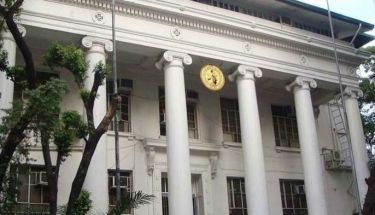Initial 4,000 estero families set for relocation – Palace
MANILA, Philippines - An initial 4,000 families living along esteros in Metro Manila will be relocated and others given P18,000 each for rent when they agree to leave the danger zones, presidential spokesman Edwin Lacierda said yesterday.
“Some families have agreed, for instance, to be relocated off-site and off-city… There are about 4,000 structures that have already been constructed by NHA (National Housing Authority). There are around 4,000 families willing to be relocated. We are providing assistance to them,†he said.
“There are other families who are also willing to be relocated. The NHA structures are being constructed right now. The target is the end of this year. So those who have given their assent to being relocated are going to be given assistance while the NHA structures are being constructed.â€
He insisted that giving out P18,000 rent assistance for the relocation of informal settlers was not a band-aid solution, as the administration had already programmed structures for these families.
“Come rainy season, come typhoon season there’s a danger of them being washed away,†he said. “At other times, however, they will also be exposed to dengue, leptospirosis, and other diseases.â€
Lacierda said there was no way the government would build structures on the same estuaries: “Those are danger zones, they have to be relocated.â€
Quoting the Department of the Interior and Local Government, Lacierda said the team in charge has held consultations with the informal settler families, who seem happy with the arrangements.
“They are just finalizing the details,†he said.
Public Works Secretary Rogelio Singson said close to 20,000 families on eight esteros in Metro Manila will be given priority in the relocation plan as these areas need to be cleared for flood-control projects.
Lacierda said the handing out of P18,000 for every family living on esteros would go ahead despite criticisms that it will only encourage squatting.
Lacierda said the DILG is still studying whether to give the P18,000 in full or in tranches.
Government agencies concerned have identified families wishing to relocate the soonest, he added.
Social Welfare Secretary Corazon Soliman said the estero families would get P3,000 per month for six months because the target for relocation would be the end of 2013.
Lacierda said the government will make sure the assistance would not go to professional squatters.
“If I’m not mistaken, Cagayan de Oro is an example,†he said.
“It’s not just an order of the President (Aquino), it’s in the law and it is the obligation of the government to ensure the safety of our citizens.â€
Lacierda said since 2011, the government had been setting aside P10 billion each year to relocate families living along river banks, on esteros and other waterways.
The budget for the subsidy will be drawn from this fund, he said, quoting the Department of Budget and Management.
Inaction is an offense
Vice President Jejomar Binay believes local officials are committing an offense when they fail to act on the proliferation of illegal settlers in their jurisdictions.
“I have been a local government official for a very long time, and we know that we have a responsibility in illegal settling,†he said. “Inaction is an offense.â€
The Housing and Urban Development Coordinating Council (HUDCC) and Pag-Ibig Fund board chairman warned local officials about allowing the number of illegal settlers to balloon in their area that they may be meted with administrative sanctions.
“I suppose at least it has warning because that is an inaction and tolerance,†he said.
Binay said the national policy on putting an end to illegal settling had been inconsistent.
“It has been changed several times from 1986 to 1990s,†he said.
“There has been an extension for one and there will be no removal because there is an election. Some even promised not to evict the illegal settlers. These are the reasons why the relocation has been delayed in the past.â€
Binay said the government must be firm in its policy on how to address the issue.
Barangay candidates must not use the elections in October to tolerate illegal settling, he added.
As of 2011, Metro Manila had 104,219 informal settler families living in danger areas, primarily waterways, Binay said.
In San Juan, Mayor Guia Gomez said at least 1,400 informal settlers at the banks of the San Juan River would be relocated as part of the city government’s cleanup drive to prevent flooding.
The relocation would start this September, she added.
Gomez said the San Juan River is interconnected with Quezon City and Mandaluyong and it is just proper for the city government to help in the cleanup. –With Jose Rodel Clapano, Non Alquitran
- Latest
- Trending




























